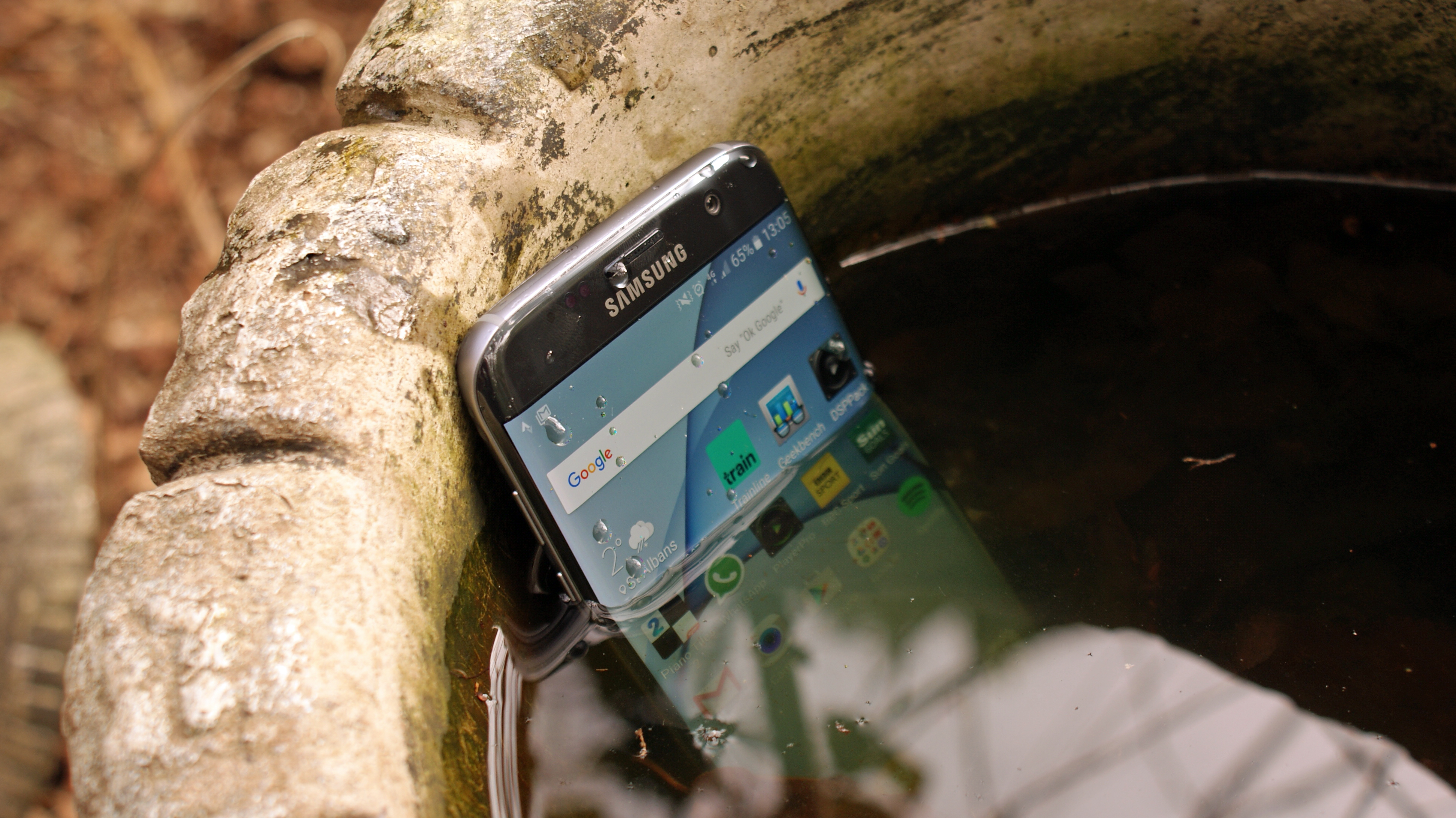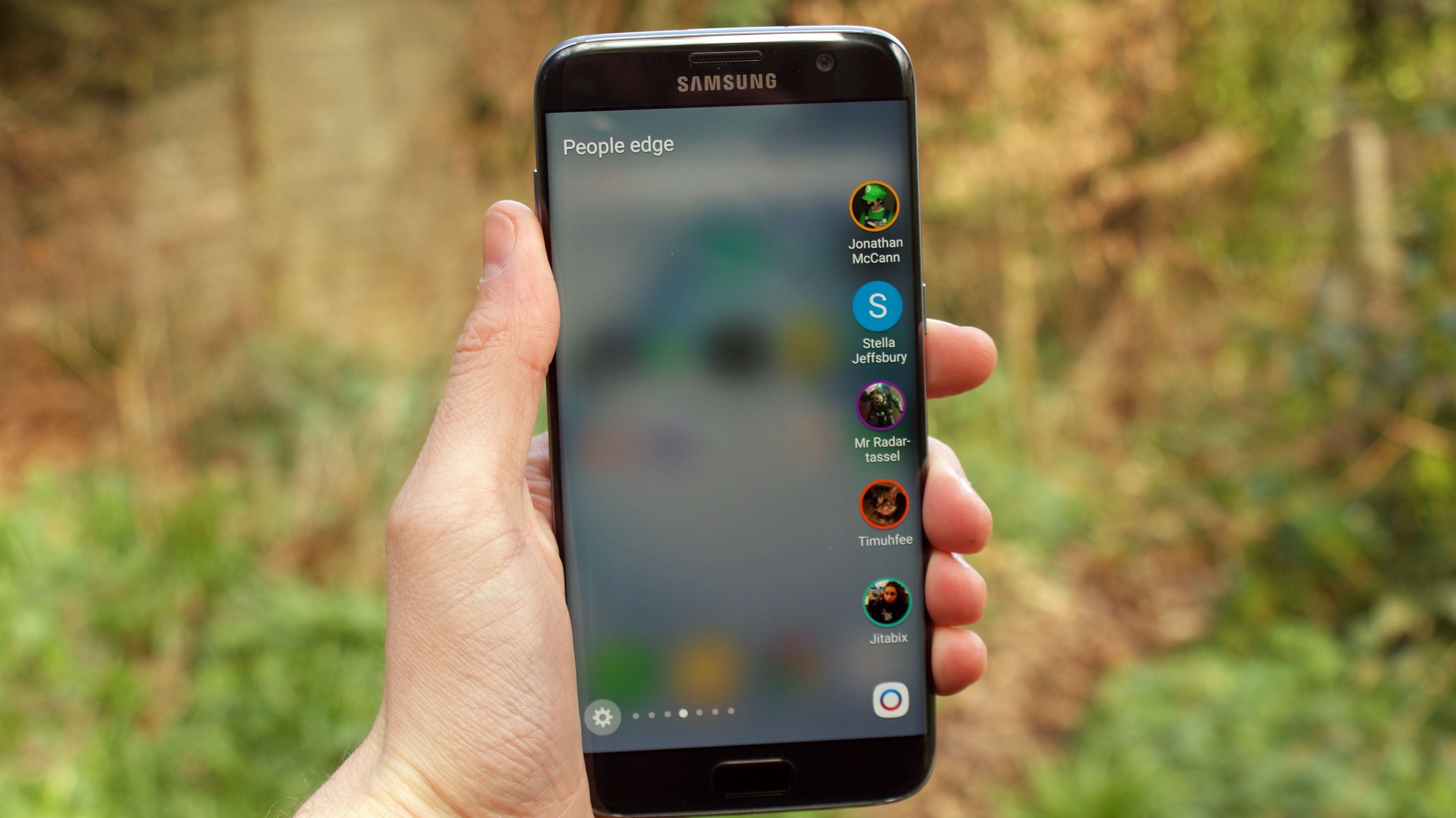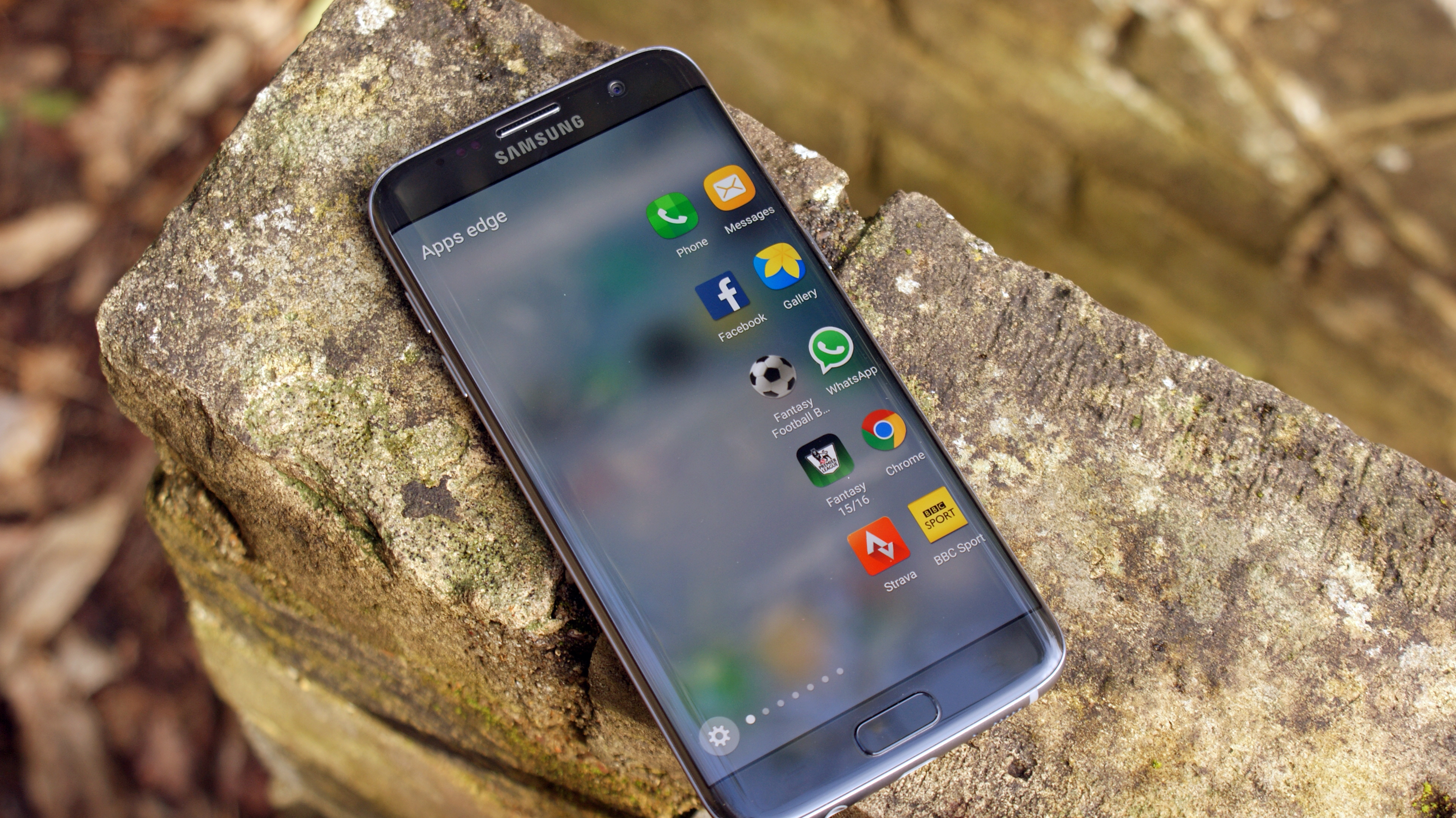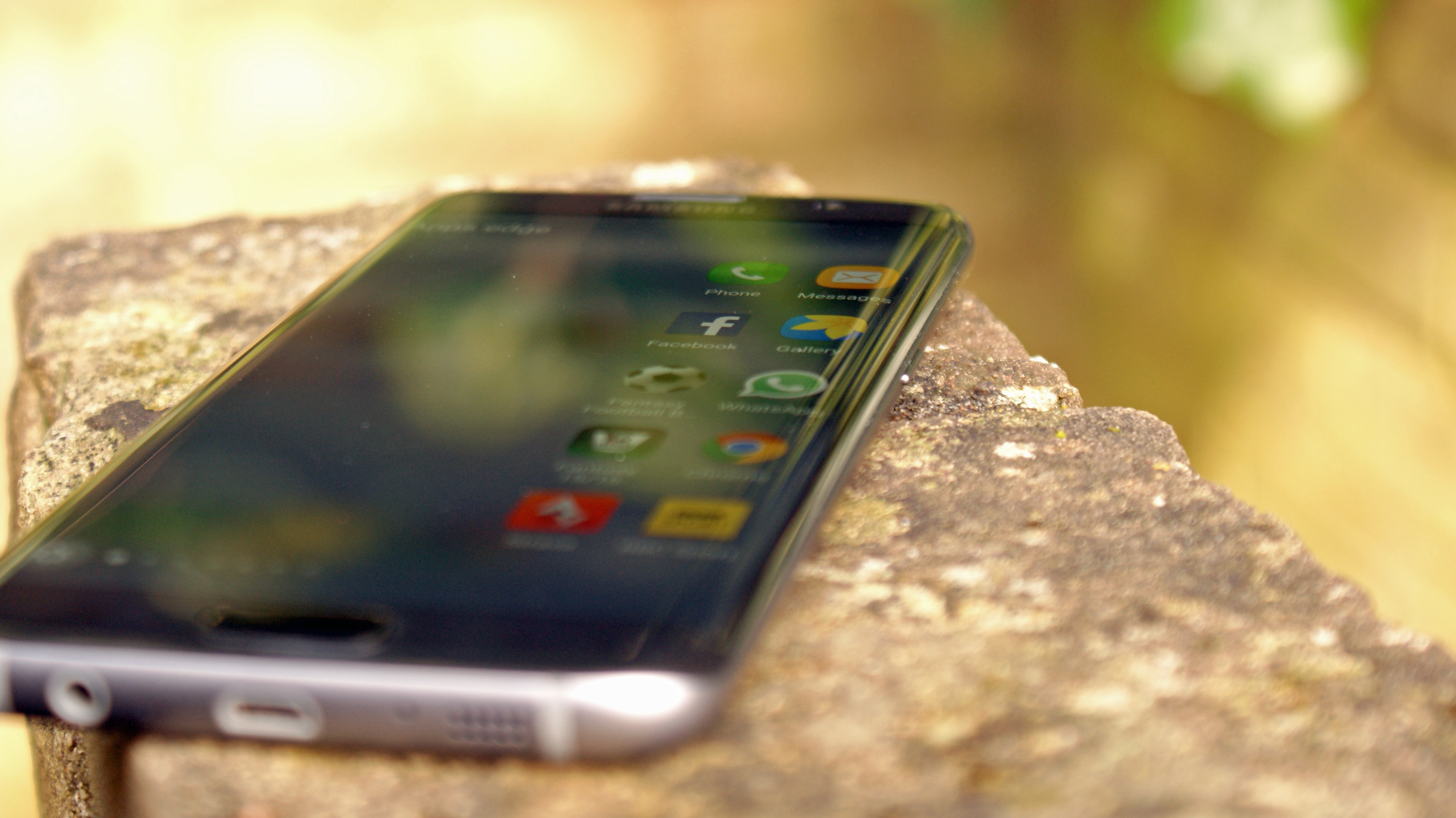TechRadar Verdict
Five stars to Samsung, as the brand iterates perfectly on an already award-winning smartphone, adding a brilliant camera and gorgeous design.
Pros
- +
Beautiful screen
- +
Great feel
- +
Super camera
Cons
- -
Slight plastic feel
- -
Expensive
Why you can trust TechRadar
Update: The Samsung Galaxy S7 Edge now has Android Oreo and is significantly cheaper than it once was. But it's also getting old, with the Galaxy S8 and Galaxy S9 range both superseding it and even the Samsung Galaxy S10 on the way soon. We've updated this review accordingly.
The Samsung Galaxy S7 Edge had a tough task when it launched in February 2016.
That's because it was following in the footsteps of its predecessor, a multi-award-winning phone, simply because it packed all the power of the 'normal' Galaxy S6 and yet... that curved edge.
We weren't alone in loving the Samsung Galaxy S6 Edge, whipping it out proudly whenever possible.
But that was 2015, and the world wasn't going to be so easily wowed by the curved design of the Galaxy S7 Edge. We'd seen it. It had been done. So what did Samsung do to make its new phone a real step forward?
Well, unlike what it's done on the Galaxy S7, which looks (initially) like 2015's model, the changes on the S7 Edge were brilliant, adding a zest to a design that could have quickly become tired.
It was so good in fact, we crowned it the "best phone of 2016". Of course, it's now been superseded by the Galaxy S8 Plus, and the Samsung Galaxy S9 Plus, but it's still a solid smartphone.
Sign up for breaking news, reviews, opinion, top tech deals, and more.
The screen is larger than the Galaxy S6 Edge, yet somehow the phone doesn't feel too much bigger in the hand. The rear of the phone is curved too, making it sit nicely in the hand. It's also water-resistant, and there's a microSD card slot.

The battery is boosted massively too versus its predecessor, giving us a handset that's able to last over 24 hours between charges.
Sure, it's no longer the golden child in Samsung's smartphone line-up. In fact, it now plays second fiddle to not only the Galaxy S8 and Galaxy S8 Plus, but also the Samsung Galaxy S9 and Galaxy S9 Plus.
But if your budget can't stretch to Samsung's latest smartphones (they are rather expensive) the Galaxy S7 Edge is still a strong choice.
Samsung Galaxy S7 Edge price and release date
- Released: March 2016
- Price at launch: £640, $769, AU$1,249
- Now down to: £320, $390, AU$600
At launch the Samsung Galaxy S7 Edge was priced at £640 ($769, AU$1,249) SIM-free, but that has dropped significantly.
In the US we've found the S7 Edge for around $390, while SIM-free prices in the UK have gone as low as £320 and in Australia you're looking at around AU$600.
It still not cheap, but in our view, it's still worth every penny.

Weight: 157g
Dimensions: 150.9 x 72.6 x 7.7 mm
OS: Android 8
Screen size: 5.5-inch
Resolution: 1440x2560
CPU: Snapdragon 820 / Exynos 8890
RAM: 4GB
Storage: 32GB/64GB (with microSD)
Battery: 3600mAh
Rear camera: 12MP
Front camera: 5MP
Design
The Samsung Galaxy S7 Edge is a phone that lives and dies by its looks. If you're only interested in the power then just go for the standard Galaxy S7.
The smaller, 'normal', model has got all the same smarts, but a slightly sharper screen thanks to packing the same amount of pixels into a smaller area.
What it misses is the clever elements that Samsung's used on the Edge. The display curves further away into the sides of the phone than ever before, which means that even though you've got a phablet-sized display, the phone is as compact as possible.
Place it side by side with the iPhone 7 Plus or 6S Plus and you'll see what we mean. The amount of bezel used above and below the display on Apple's phone is almost laughable, especially when you compare it to how tightly packed everything is on the S7 Edge – and the Samsung has a much, much larger battery. Though of course newer phones like the iPhone XS now show it up.
The S7 Edge is shorter and narrower (150.9 x 72.6mm) than the 7 Plus and 6S Plus (158.2 x 77.9mm), even though both devices have the same 5.5-inch screen size. The iPhone is however, a hair thinner at 7.3mm versus the Samsung's 7.7mm girth.
It's also very similar in size to the LG G5 (149.4 x 73.9 x 7.7 mm), which again sports a 5.5-inch display - with the Android manufacturers really sticking it to Apple.

One of our favorite parts of the design upgrade on the S7 Edge comes on the rear. A process called 3D Thermo Forming – which sounds like it's been named by a sentient marketing machine – enables the brand to curve the rear of the phone into a single metal rim that runs all around the edge.
It's a feature that was used on the Note 5 (and is also used by brands like Xiaomi) to really help the phone slip into your palm and remove any sharp metallic edges.
Combine that with the same curve on the front of the device and you can see why it feels so smooth in the hand, almost pebble-esque in the way you can roll it around in your palm.
Intriguingly, this has left some people with the impression that it's not quite got the same premium feel as previous Samsung phones. By having less metal to grasp on to you're touching the Gorilla Glass 4 covering, which can feel a little like plastic due to its lightweight (but still very strong) construction.

Tap the back of the phone and it lacks the sheen of metal, but in fairness that lack of metal allows for the wireless charging that's a key feature of the S7 Edge.
That back does have one issue though: it's a fingerprint fairground, a veritable carnival for any crime scene investigators looking to nab you for some dirty villainy.
So many phones have that criticism thrown at them, but it's particularly true for Samsung's new curved phone. It's easy enough to wipe the sticky offenders off, but it's annoying to have to do it time and again.
The camera protrusion on the rear has been reduced to just 0.42mm, which means it's barely noticeable when you're placing the phone down, while still being strong enough to help protect the lens.
And then you remember something else: this phone, with its elegant rim and clean lines, and complete with exposed ports, is waterproof.

No, sorry, water-RESISTANT, as it's IP68 rated. That means it's still able to work after being dunked in fresh water for 30 minutes up to a depth of 1.5 metres, so you'll be able to use it happily in the bath, or beside the shallow end of the swimming pool, and not worry about dropping it.
It's less of a 'let's take our phone scuba diving to get some amazing pictures' feature, and more of a safety feature – and the phone will even refuse to charge if the port is too wet, such is its ability to manage moisture.
Sadly, you're still left with a single speaker firing out the bottom of the Galaxy S7 Edge, which doesn't really have the most premium of sound; however, it's serviceable, and noticeably louder than other mono speakers we've used.
Overall, we can't speak highly enough of the S7 Edge's design. It feels amazing in the hand, and Samsung has managed to bring enough upgrades to make this look and feel like a completely different phone; and most people trying it for the first time will – even if they're not a fan – be able to appreciate something different in a world filled with black, rectangular slabs.
Screen
The display, while technically part of the Samsung Galaxy S7 Edge's design, is worthy of chatting about in its own right – simply because it looks so great.
It's the defining feature when you pull this phone out among friends, and while it doesn't elicit the same response that the S6 Edge's display did the previous year (like we said, curved displays are nothing new these days), it still gets a lot of approving looks, especially as it's combined with the rounded back.
The QHD resolution of 2,560 x 1,440 still looks as good as anything we've seen on a smartphone. Despite being stretched a little from last year, the 5.5-inch size still looks absolutely pin-sharp, and it's very hard to see any artefacts lying around on the screen.

It's amazing to think that, two years after LG brought out the first mainstream QHD phone, we still don't have any dedicated content that can be viewed at this resolution. Despite that, however, I don't feel like the Galaxy S7 Edge really suffers, as that display makes viewing web pages and photos a really great experience.
The S7 Edge uses Super AMOLED technology, which Samsung's been chucking out for close to a decade now, and it really works well to make the phone look premium and the colors really pop.
The contrast ratio – the difference between the whitest whites and the blackest blacks – is still pretty sensational, which is because when they're not in use, the pixels are turned off; with something like the iPhone 6S or the LG G5 you've got a display that just blocks out the backlight when the pixel is showing a black image, so there can be a small amount of light bleed-through.
Though note that many manufacturers - including Apple - have moved to OLED with newer handsets, so they can now match Samsung's contrast ratio.
The Galaxy S7 Edge screen also has the added benefit of the side display, which is accessed by swiping your thumb along from the right- or left-hand side of the phone's screen (you can specify which in the settings).

Where this was a nonsense, useless feature in years gone by, the side display has a much more defined role on the Galaxy S7 Edge. You can easily get access to news, regular contacts, tools (the ruler, for digi-measuring is back – GET IN) and other elements that are currently in development.
Check out the Specs and Performance section of this review to hear a little bit more about this feature – or skip it entirely if you're bored of hearing us witter on about a piece of the display you can swipe.
- Get the best deal on your next Samsung purchase with our Samsung coupon codes.
Current page: Introduction, design and screen
Next Page Always-on display and super-fast charging
Gareth has been part of the consumer technology world in a career spanning three decades. He started life as a staff writer on the fledgling TechRadar, and has grew with the site (primarily as phones, tablets and wearables editor) until becoming Global Editor in Chief in 2018. Gareth has written over 4,000 articles for TechRadar, has contributed expert insight to a number of other publications, chaired panels on zeitgeist technologies, presented at the Gadget Show Live as well as representing the brand on TV and radio for multiple channels including Sky, BBC, ITV and Al-Jazeera. Passionate about fitness, he can bore anyone rigid about stress management, sleep tracking, heart rate variance as well as bemoaning something about the latest iPhone, Galaxy or OLED TV.
